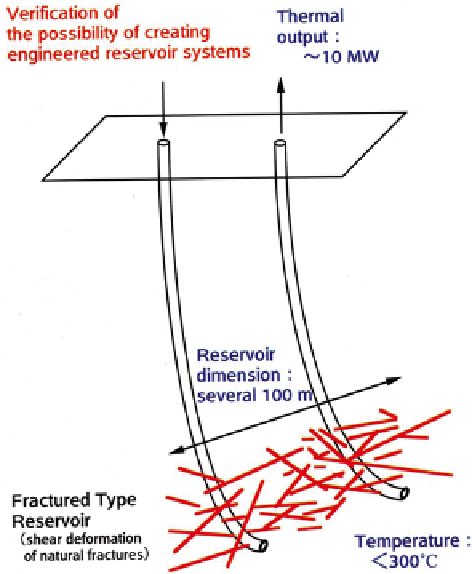Environmental Engineering Reference
In-Depth Information
The key challenge for EGS is to stimulate and maintain multiple reservoirs with suf-
ficient volumes to sustain long-term production at acceptable rates and flow imped-
ances, while managing water losses and risk from induced seismicity (Tester et al.
2006
). Conventional geothermal resources currently used to produce electricity are
either high-temperature systems (> 180 ºC), using steam power cycles (either flash or
dry steam driving condensing turbines), or low to intermediate temperature (< 180 ºC)
using binary-cycle power plants. All projects in Fig.
6.7
have succeeded in creating
artificial fracturing, and have demonstrated that it is possible to create such an arti-
ficial water circulation system in rock masses, with the remaining task to design the
reservoir and to predict long-term performance.
Included in these projects is the Hijiori experiment in Japan funded by Japan's
New Energy and Development Organization (NEDO). The Japanese work at the
Hijiori (10 MW) site has involved EGS using stimulation of subsurface regions
where temperatures are high enough for effective utilization. These experiments have
successfully generated a reservoir of several 100 m diameter with a thermal output of
up to 10 MW. Rock temperatures were generally below 300 and this has allowed the
possibility of creating fractured reservoirs to be verified. In these projects, a reservoir
consisting of a fracture network is created or enhanced to provide well-connected
fluid pathways between injection and production wells (see Fig.
6.8
). Heat is ex-
Fig. 6.8
Achievements of the
HDR/HWR projects

